Tag: Morningside Translations
All You Need to Know About Text Expansion and Contraction
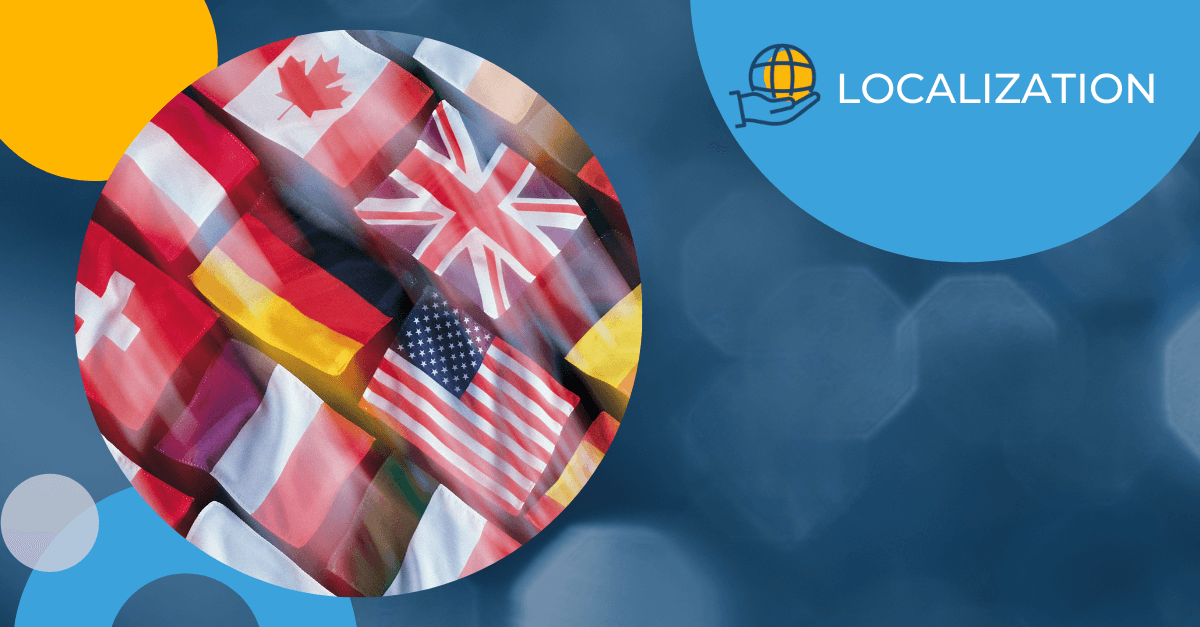
You may have noticed that it can take more words to say something in one language than in another. For example, it takes three words in French (s’il vous plaît) to accomplish what you can with one word of English (please). Text expansion and contraction has a direct impact on the cost of translation, and it plays an extremely important role when considering design for multilingual websites, marketing campaigns, presentations – and pretty much any project that needs to be available in multiple languages.
What is text expansion and contraction?
This is a term used in the translation industry to account for the increase or decrease in a document’s final word count when it is translated. For example, French and other romance languages are known to be wordier than English. A document with 1,000 English words translated into French will convert into approximately 1,150 target words — a 15% increase in the document’s word count. That is text expansion. Asian languages like Chinese, Korean and Japanese will usually convert into fewer total words when translated into English. That is text contraction.
How does text expansion and contraction affect pricing?
Calculating expansion or contraction during translation is not an exact science. Most language service providers use ratios based on typical expansion/contraction rates for different language pairs. For example, in English to German translation, the word count usually contracts by 20%, and therefore this is the ratio that most translation companies use. (If you have ever seen a German compound word like Donaudampfschifffahrtsgesellschaftskapitänsmütze – which translates to “Danube steamboat shipping company Captain’s hat” – you’ll understand why.) Pricing can also be affected by a document’s subject matter, terminology, and the quality of the original writing — all of which can cause the text to expand more or less than the ratios predict.
How does text expansion and contraction affect design?
Let’s say you have a short product description in English (100 words) that needs to be translated into French for a PDF brochure, a video advertisement, and a software app. Here’s what could happen: A one-line English headline in a cleanly laid out PDF brochure can turn into a two-line French headline that bumps the rest of the copy down or even off the page. A video with music and graphics synced to English text can become unsynced when the text is translated to French. The menu buttons on a software app can end up expanding awkwardly or displaying incomplete words, causing a major UI problem. So, as you can see, translations that result in text expansion or contraction can have a very real impact on design quality. That’s why it’s important to work with a localization expert to ensure all of your materials are not only translated accurately, but visually adapted as well.
Trust a localization expert
Morningside has 20 years of experience working with businesses to linguistically adapt products, documents, websites and software applications for target markets around the world. It’s a process we call localization, where translation is just the first step. We then work to adapt layout, design and graphical elements to properly fit the translated text. Our team includes expert linguists, DTP specialists, voiceover talent, and dedicated project managers experienced in providing multilingual localization services in 200+ languages. If you have any more questions about text expansion and contraction, or localization in general, contact us below.
Get the latest insights delivered to your inbox
Global Competence
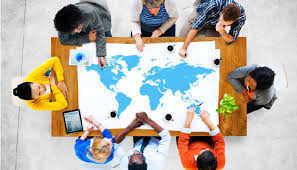
It’s not a secret to anyone familiar with our work that Morningside Translations is an international company both in its physical scope as well as clientele. It’s to be expected for our industry. But what is remarkable is that our internal staff is also truly global.
In a recent survey of our employees, not including language professionals, over 87% were found to speak at least one language in addition to English at a conversational level or higher.
Most Commonly Spoken Languages at Morningside:
Spanish: 52.1%
Hebrew: 31.3%
French: 22.9%
Chinese (Mandarin): 10.4%
Over 70% of our staff has spent at least 6 months living abroad; almost half were raised by parents who grew up outside of the United States, and a quarter are immigrants themselves.
100% of our staff has traveled abroad (the most popular destinations are Italy, France, and our friendly neighbor to the north, Canada).
The cultural insights that stem from such travels and language skills are invaluable. And during a time when “more Americans have passports than ever before,” more than double the amount of passports in circulation in 2000, it is not only impressive, but essential that we as translation professionals keep up with our ever-shrinking world. We’re proud to have a team that has what earlier this summer, the New York Times called “global competence” –the ability to understand, assimilate, and apply diverse perspectives and practices when facing new situations and challenges. It’s a pleasure using what we’ve learned from the world to help it run a little more efficiently.
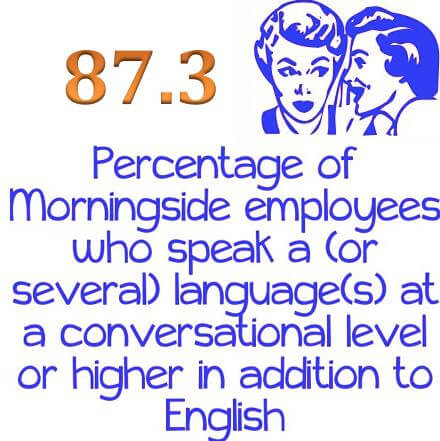
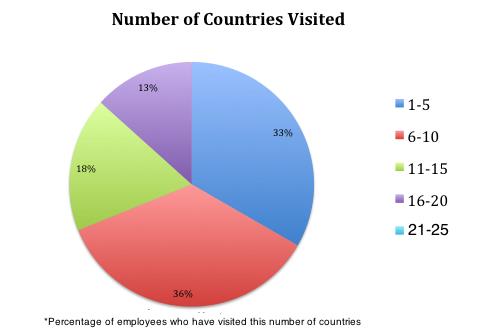
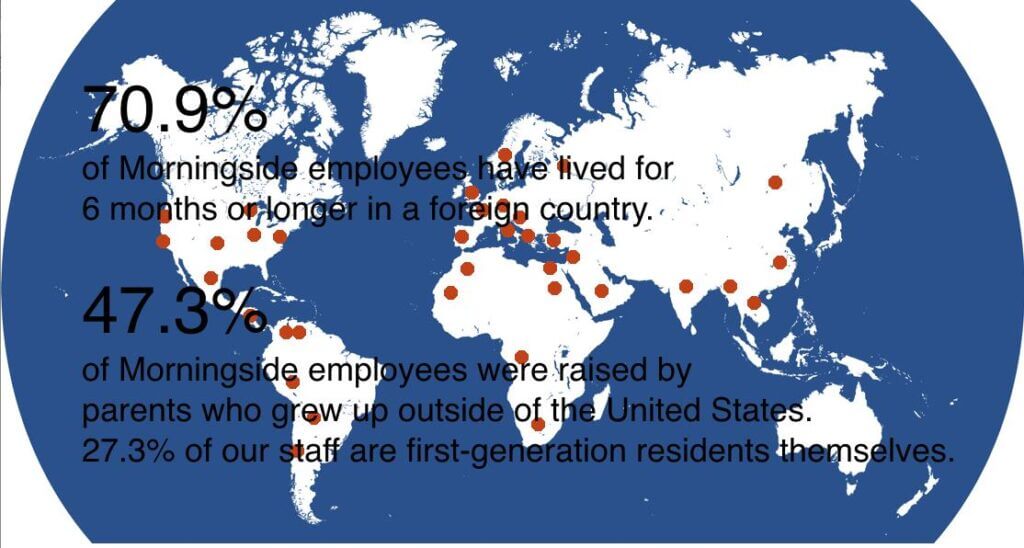
Get the latest insights delivered to your inbox
Quality vs. Price

The U.S. economy has yet to recover from the Great Recession, and understandably companies and law firms are still extremely cost-sensitive. Morningside always strives to reduce its clients’ translation costs, and knows the importance of offering the most competitive rates possible. But in trying to improve your and your client’s bottom line, one thing you should absolutely not do is compromise on quality. Translations are not a commodity. A bag of rice is more or less the same no matter where you get it. Not so with translations. If the quality of a translation was always the same, then Google Translate would be the ideal service, since its translations are free.
Almost every day, we are told by a company or law firm that another translation service offers much lower fees. Our response: if a translation service can offer far lower rates than its competitors, it is worth inquiring why. For example, for patent translations, Morningside relies on in-country patent attorneys to proofread translated applications. This increases the cost of the translation, but it is a critical quality assurance step. Many of our competitors do not. Our translators are widely recognized as some of the best names in the industry. Some of our larger competitors do not have the luxury of being as selective. If a translation service offers lower rates by skimping on proofreading or relying on sub-par translators, then the money saved could easily be canceled out by costs related to revising or even re-doing the translation.
In short, as you consider options for reducing translation costs, it makes sense to carefully review the workflow and processes of different translation services. Just as no two translations are exactly alike, no two translation services offer the same quality.
Get the latest insights delivered to your inbox
Chinese, Spanish, and Portuguese: Languages That Convert
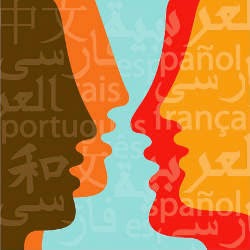
Translating a document into multiple languages can be an expensive proposition. A user manual, product data sheet, or a patent application that needs to be translated for multiple countries and jurisdictions can easily cost tens of thousands of dollars.
But your translation costs can be significantly lowered if two or more of your target countries speak (roughly) the same language.
For example, one Latin American Spanish translation (with minor modifications) will suffice for Mexico, Venezuela, and Argentina, and the other Spanish-speaking Latin American countries. You probably already knew that.
But that Latin American Spanish translation can also be converted into European Spanish and used in Spain. Though there are important differences in grammar and vocabulary between European and Latin American Spanish, they are similar enough that one Latin American Spanish translation can be revised and utilized in Spain (and vice-versa). The fee for converting the translation is a fraction of the cost of commissioning an entirely new translation.
This is also the case when you need to translate a document for both Brazil and Portugal. While there are big differences in spelling, grammar, and terminology between Brazilian Portuguese and European Portuguese, one translation for either target country can still be edited and revised for use in the other.
The third common language that converts is Chinese. There are two forms of written Chinese: Simplified and Traditional. Simplified Chinese is used in mainland China and in Singapore. Traditional Chinese is used in Taiwan and Hong Kong and sometimes referred to as ‘Taiwanese.’ Simplified Chinese characters have fewer strokes than Traditional Chinese, which is why it’s called “Simplified.” Traditional Chinese also uses far more characters (about 13,000 vs. about 8,000 in Simplified Chinese). Despite these differences, it is still quite feasible to commission one translation for use in both mainland China and in Hong Kong and Taiwan. But because Traditional Chinese is more complex than Simplified Chinese, it is much easier to convert TC to SC than the other way around.
The bottom line: If you are translating for Latin America and Spain, Brazil and Portugal, or China and Taiwan, you can lower your translation costs substantially by asking your translation company to provide a single translation, and then converting that translation for use in the other country. Morningside offers this conversion service, which is especially relevant to our legal and patent translation clients. If you have questions about converting a translation, you can contact Morningside via phone or email and we will be glad to assist.
Get the latest insights delivered to your inbox
Certified Translations

What does it mean when a translation is certified? In the U.S., it means the translator and/or translation company has added a signed statement that the translation is accurate and correct to the best of their knowledge and ability. It may also be notarized to confirm the identity of the person signing the statement. Essentially, the certification creates a legal record which confirms that the translation was produced in good faith and according to translation standards and norms.
When is it necessary to get your translation certified? If you are planning to submit a translation to a courtroom or government office or agency, you may need to obtain a translation certification. Different courtrooms and agencies have different certification requirements, so you may want to check first to see exactly what kind of certification is required.
Morningside’s certified translations are regularly submitted to U.S. courtrooms, and to government and regulatory agencies including the Department of Justice, Citizenship and Immigration Service, FDA, USPTO, and the United Nations. Our certified translations have also been successfully submitted to courtrooms, government agencies, and patent offices across the globe. We provide most types of certification free of charge.
Do you have a questions about certifying a translation? Call Morningside at (212) 643-8800.
Get the latest insights delivered to your inbox
English – A Polyglot Language

As a professional translation company, we spend much of our time focused on foreign languages, especially languages that come up frequently for legal translations and patent translations. But every so often we turn our attention to our native English. We are constantly surprised by how diverse the English language is, and how much of the English vocabulary is derived from foreign words. According to one survey, only one-third of English words come from Old English. 41% come from French and Old Norman, and at least 15% comes from Latin. Another 10% come from a mix of other languages.
There are plenty of English words whose foreign origin is quite obvious. We can guess where chauffeur, angst, and desperado come from (French, German, and Spanish). But many words that sound like “classic” English also have a foreign origin, and the origin is not necessarily European or even Indo-European–you have probably used a few words today that come from languages that many of us have never heard of. Here are a few examples:
- Ketchup – The word comes from Amoy, a Chinese dialect, where it meant the brine of pickled fish.
- Barbecue – The quintessential American cooking tradition, BBQ actually comes from Carib, a language spoken in northern South America and the Caribbean.
- Sugar & Candy – These sweet words come from Sanskrit, the ancient Hindu language of Northern India.
- Husband – The word comes from Old Norse, the extinct language of the Vikings, where it meant “master of the house.” In modern American usage, it often means the exact opposite.
- Pal – The word comes from Romany, the Gypsy language, where it means brother or comrade.
- Tank – As in water tank. The word comes from Gujarati, a language spoken in India.

